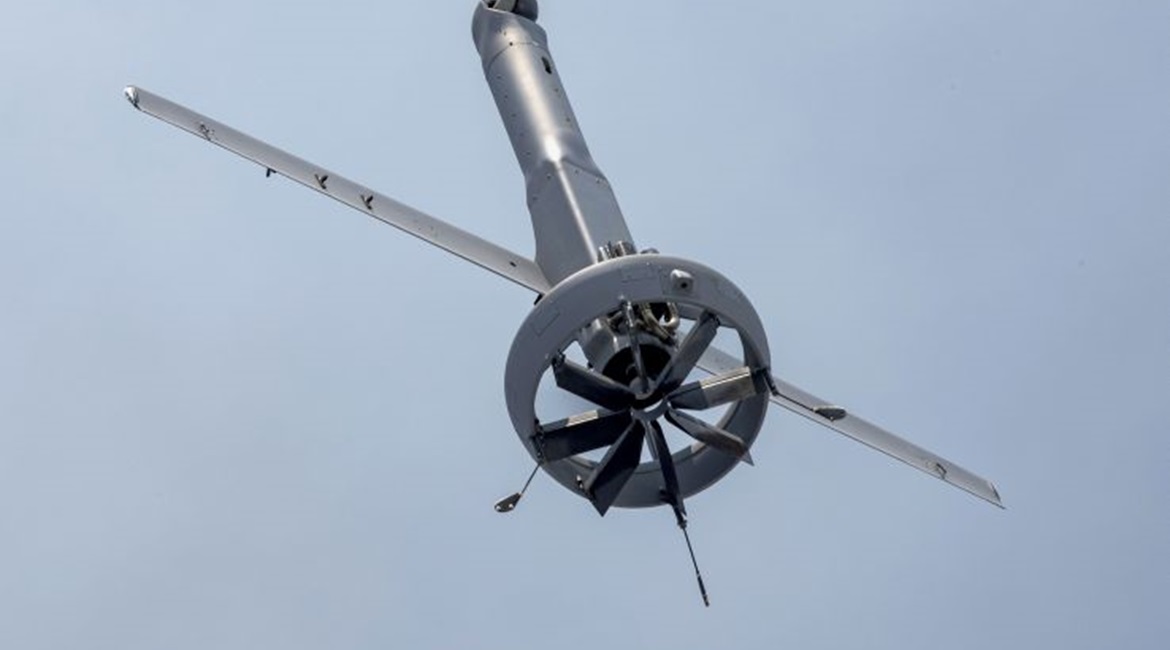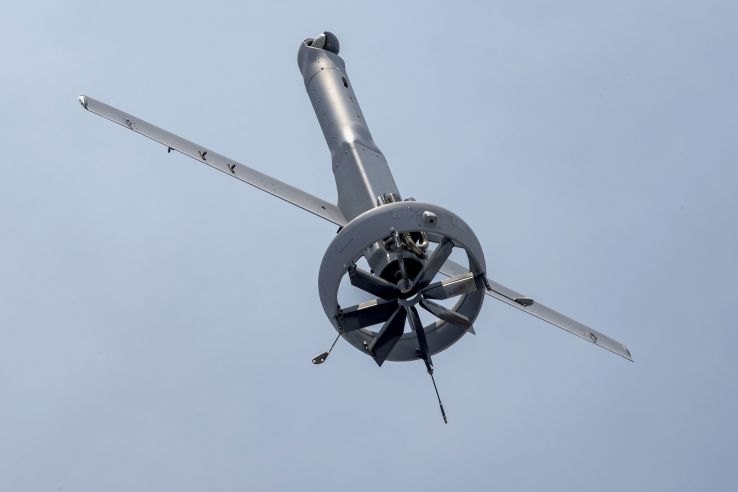
Defence Research and Development Canada (DRDC) contracted Kongsberg Geospatial and ING Robotic Aviation to perform unmanned aerial vehicle (UAV) trials from Canadian Coast Guard (CCG) vessels in November 2020.
Kongsberg Geospatial, offering the Martin UAV V-Bat 128, was selected to combine take-off and landing from the small confines aboard a ship with the long endurance of a fixed-wing aircraft while carrying multiple sensors, according to a Kongsberg Geospatial statement. The aircraft will communicate with Kongsberg Geospatial’s Midas sensor data management system, which allows a range of sensor data, including full-motion video from unmanned systems, to be processed and exploited in near-realtime by analysts on board CCG ships.

The Martin UAV V-Bat pictured on 24 July 2019. The aircraft, offered by Kongsberg Geospatial, was selected by Defence Research and Development Canada to perform UAV trials from Canadian Coast Guard vessels. (US Navy)
Midas provides the capability to compare historical and live data from the mission area, and to examine sensor data with a variety of tools, including motion and object detection, in near-realtime. The combination of the V-Bat 128 and Midas will allow CCG vessels to significantly expand their surveillance range for search and rescue missions, and for the movement of icebergs, without requiring the use of manned aircraft.
Kongsberg Geospatial’s contract, worth USD1.03 million, is from a 2019 DRDC Innovation call for proposals that sought high-endurance and small-footprint intelligence, surveillance, and reconnaissance (ISR) unmanned aircraft. DRDC desired a UAV with the endurance of a fixed-wing ISR platform and the portability, manoeuvrability, and small size of a multirotor aircraft.
A Department of National Defence (DND) spokesperson did not specify the value of ING Robotic Aviation’s contract on 17 February. The company did not return requests for comment prior to publication.
Looking to read the full article?
Gain unlimited access to Janes news and more...






